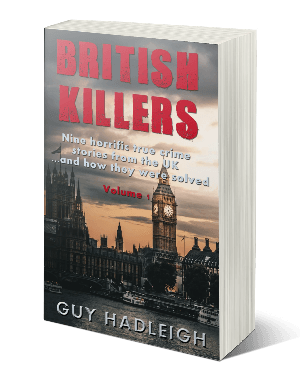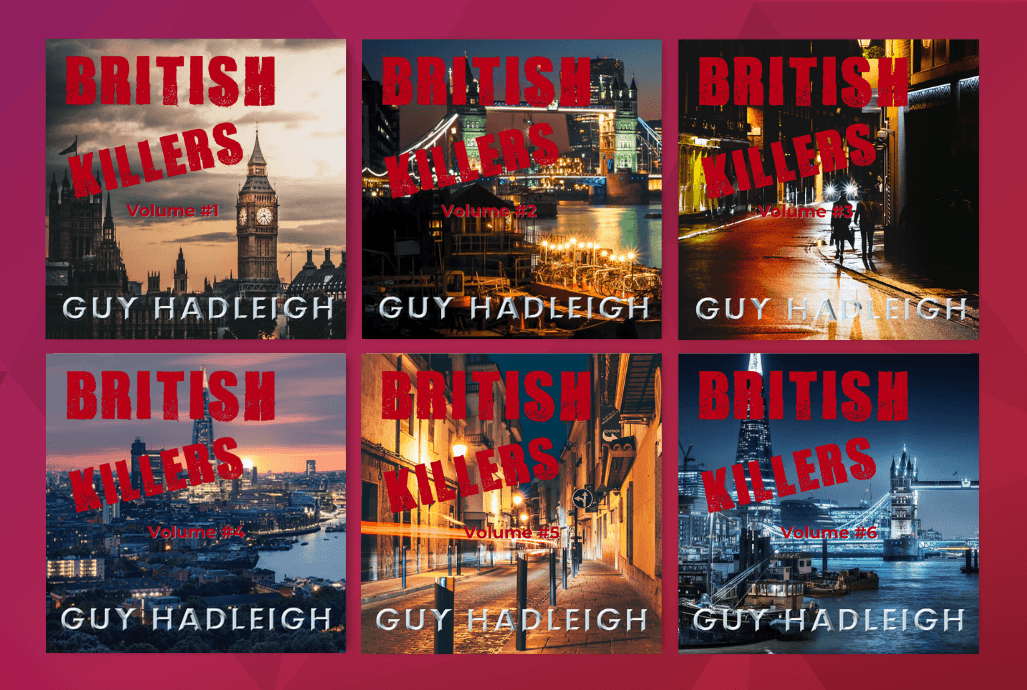
The following is a shortened version of 'The Hitman', one of the 9 true tales of crime in British Killers Volume #1 by Guy Hadleigh
In the 1970s, Henry "Big Harry" McKenny and his partner John Childs established themselves as ruthless contract killers in London's criminal underworld. Their reign of terror came to light following a seemingly routine armed robbery investigation, unveiling a series of brutal murders that shocked even hardened detectives.
The Fateful Robbery
In June 1979, a well-organized team of gunmen hijacked a Security Express van in Hertford, forcing the guards to continue their rounds before tying them up and escaping with over half a million pounds. The robbers made a crucial mistake - leaving behind boiler suits containing a key to a BMW 320. This led police to Philip Cohen, a wealthy East London greengrocer, who quickly implicated the rest of the gang, including John Childs and the elusive "Big Harry" McKenny.
When Flying Squad detectives interviewed the captured robbers, they got more than they bargained for. Cohen, desperate to avoid a lengthy sentence, revealed that McKenny, Childs, and Terry Pinfold had been involved in multiple murders over the years. This shocking claim opened the door to a much darker investigation.
The Murders
As detectives dug deeper, they uncovered a series of disappearances linked to McKenny and Childs:
1. George Brett and his 10-year-old son Terry: A well-known haulage contractor and his son who vanished in January 1975 after going to a business meeting.
2. Terence "Teddy Bear" Eve: A soft toy businessman who disappeared in October 1974, allegedly killed so McKenny could take over his lucrative business.
3. Robert Brown: A former professional wrestler who went missing in January 1975 after reportedly witnessing the aftermath of Eve's murder.
4. Freddie Sherwood: The owner of a nursing home in Herne Bay who disappeared in July 1978 while trying to sell his car.
5. Ronald Andrews: A roofing contractor and friend of McKenny who vanished in October 1978, his car later found submerged in a river.
The Investigation Intensifies
Detective Chief Superintendent Frank Cater, one of Scotland Yard's most experienced murder investigators, took charge of the case. John Childs, already in custody, was ready to talk. In two weeks of carefully recorded questioning, Childs provided chilling details of the murders and their gruesome method of disposing of bodies.
According to Childs, the victims were taken to his council flat in Poplar, where they were dismembered and burned in the fireplace. The process took many hours, with the remaining bones ground up and scattered along with the ashes.
Forensic Evidence
Although skeptical at first, the police staged a reconstruction using a 70kg pig to test Childs' claims about body disposal. The experiment, conducted by Professor James Cameron of the London Hospital Medical College, proved that it was indeed possible to dispose of a body in this manner.
Investigation - Pig In the fireplace
John Childs’s confession to the police was horribly detailed but although Frank Cater, a detective of great experience, believed the villain's story, he didn’t see how they could prove that a human body could be disposed of by being burned in a tiny fire grate. So Cater asked pathologist Professor James Cameron if he thought that it was possible. Cameron replied that he had no idea, but suggested that they carry out a reconstruction to find out.
Man-sized pig
In place of a human body, Cater used a pig weighing 70kg, roughly the same size as an average man. A team of police and forensic specialists took the pig to Childs’s flat in East London and Professor Cameron then used the knives and a bone saw said to have been used by McKenny, and set about the pig. In his own words, Cameron ‘abandoned all surgical skill in favour of brute force and ignorance.’
Cremation
As soon as Cameron had the pig cut up and ready for incineration the detectives lit a good fire in the 45cm grate. The cremation began with the head and the whole operation lasted 13 hours. Carefully recorded measurements showed that although the temperature of the fireplace reached more that 500°C, the room temperature never went above 24°C.
Burning the intestines
But the detectives noticed that when the intestines were put on the fire, the flames died down because of the fluid released from them.
When Cater cross-checked this point with Childs, the villain told him that they had hit the same snag. McKenny had got round the problem by drying out his victims’ insides in front of the fire before actually placing them on it.
Telltale smell
Cater was also surprised to find that when he checked the corridor outside the front door no telltale smell of roasting pork could be detected. He was later to remark: ‘The smell inside was another matter. I don't think there was a man present who has ever been able to face a pork chop again.'
Forensic work at McKenny's bungalow and Childs' flat yielded crucial evidence. Despite the killers' efforts to eliminate traces, blood was found in multiple locations, indicating at least two people had died violently. Lead particles, likely from melted bullets, were also discovered in Childs' fireplace.
The Hunt for "Big Harry"
While Childs was in custody, McKenny remained at large. After the press got wind of the story, Detective Chief Superintendent Cater decided to release McKenny's photo and description to the public. This led to numerous sightings, including one where McKenny narrowly escaped capture after a car chase.
The manhunt ended on September 20, 1979, when armed officers surrounded a house in Plaistow, East London. McKenny surrendered peacefully and was taken into custody.
The Trials
In December 1979, John Childs pleaded guilty to six murders and was sentenced to life imprisonment. Harry McKenny's trial began in October 1980, with Childs as the key prosecution witness. After a 40-day trial, McKenny was convicted of killing George Brett, Terry Brett, Frederick Sherwood, and Ronald Andrews. He received a life sentence with a recommendation to serve at least 25 years.
The Victims and Their Stories
George and Terry Brett: George Brett's involvement in a violent brawl allegedly led to a £1,800 contract on his life. He brought his young son Terry to the meeting, perhaps believing it would protect him. Both were shot dead by McKenny, with Terry clutching a teddy bear as he was killed.
Freddie Sherwood: Lured to his death under the pretense of selling his car, Sherwood was killed for a £4,000 contract. McKenny shot him in the head as he counted the supposed payment for his vehicle.
Ronald Andrews: A personal matter for McKenny, who had been having an affair with Andrews' wife and wanted to marry her. McKenny and Childs posed as private detectives offering to help Andrews discover his wife's lover, only to execute him when he arrived to discuss the case.
The Man Behind the Murders
Harry McKenny, standing at 1.95 meters tall and weighing 108kg, was an imposing figure in London's East End. Known as "Big Harry" or "Harry the Bandit," he was respected for his nerve in armed robberies and feared for his violent tendencies.
More than just a thug, McKenny was a qualified pilot and trained salvage diver. He had even invented and patented an air pump design used by professional divers worldwide. Despite his intelligence and skills, McKenny chose a life of crime, believing it to be more profitable.
McKenny's physical prowess and reputation were such that even the notorious Kray twins had sought to recruit him as an enforcer, an offer he declined. He was also known as a charming ladies' man, described by some as resembling Hollywood star Rock Hudson.
The Aftermath
The case of Harry McKenny and John Childs shocked the British public and law enforcement alike. It revealed a level of cold-blooded contract killing previously thought to be more common in American organized crime than in the UK. The brutal nature of the murders, particularly the killing of young Terry Brett, and the callous method of disposing of the bodies, left a lasting impact on those involved in the investigation.
The case also highlighted the importance of forensic evidence in solving complex crimes, even when bodies are not recovered. The meticulous work of the forensic team in finding microscopic traces of blood and other evidence proved crucial in corroborating Childs' confession and securing convictions.
For the families of the victims, the convictions of McKenny and Childs brought some closure, though the lack of recoverable remains meant that many never had the chance to properly lay their loved ones to rest.
Update:In 2003, the Court of Appeal in London overturned the convictions of Terry Pinfold and Harry McKenny, declaring them unsafe, and both men were released from prison.
Click on the image below to find the British Killer Series on Amazon Kindle


